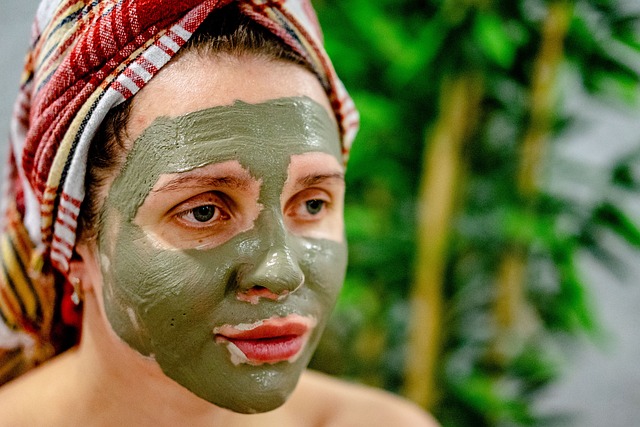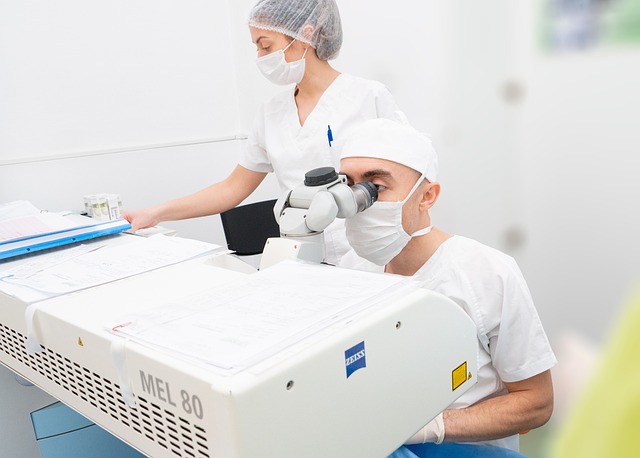Laser skin treatments, a popular non-surgical alternative, enhance skin texture and appearance through advanced laser technologies. Fractional lasers stimulate collagen for fine line reduction, while Intense Pulsed Light (IPL) targets sun damage and rosacea. Customized treatments offer safe and effective solutions for pigment correction, hair removal, and skin resurfacing with minimal downtime. Informed consent is crucial due to potential side effects, but qualified practitioners minimize risks. With continuous innovations, laser skin care promises more precise, targeted results, leveraging AI and AR for improved patient outcomes.
Discover the transformative power of non-surgical laser procedures, a revolutionary approach to skincare. This comprehensive guide explores the full spectrum of laser skin treatments available today. From understanding the science behind their efficacy to uncovering the myriad benefits and potential risks, we demystify this cutting-edge technology. Learn who is a suitable candidate and what the future holds for this dynamic field, as we delve into the latest trends and innovations in laser skin care.
Understanding Non-Surgical Laser Procedures: An Overview

Non-surgical laser procedures have emerged as a popular and effective way to enhance skin texture and appearance, offering a non-invasive alternative to traditional surgical methods. These advanced laser treatments utilize concentrated beams of light to target specific skin concerns, such as wrinkles, pigmentation issues, and uneven skin tone. By stimulating collagen production and breaking down unwanted debris, lasers can provide significant improvements in skin elasticity and overall radiance.
Laser skin treatments come in various forms, each designed to address different skin needs. For instance, fractional laser therapy uses tiny beams to create micro-injuries, prompting the body to heal and produce new skin cells. This process can reduce fine lines and improve skin texture. On the other hand, intense pulsed light (IPL) treatments use a broad spectrum of light to target various chromophores, effectively treating conditions like sun damage and rosacea. Understanding these procedures and their unique benefits is key to deciding if laser skin treatments are the right choice for individual aesthetic goals.
Common Types of Laser Skin Treatments Available

The world of non-surgical cosmetic procedures has seen a significant rise in popularity, and at the forefront is laser skin treatments. These advanced technologies offer a range of options for individuals seeking to enhance their skin’s appearance without invasive surgery. Common types include fractional laser resurfacing, which uses tiny laser beams to stimulate collagen production, leading to smoother, more youthful-looking skin. Another popular choice is intense pulsed light (IPL) therapy, targeting various skin concerns like sun damage, age spots, and rosacea by emitting a broad spectrum of light.
Additionally, laser hair removal has gained traction as a permanent solution to unwanted hair, utilizing specific wavelengths to target and destroy hair follicles. Some procedures, like laser eye correction, have also evolved, offering safer and more precise ways to correct vision issues. With ongoing advancements, the array of laser skin treatments continues to expand, catering to diverse skincare needs and preferences.
How Do Laser Skin Treatments Work? The Science Behind It

Laser skin treatments have gained significant popularity due to their non-invasive nature and ability to deliver remarkable results. The science behind it involves advanced technology that targets specific pigmented cells in the skin, known as melanocytes. Lasers emit light energy at a particular wavelength, which is absorbed by these cells, causing them to break down and eliminate. This process stimulates collagen production, the body’s natural protein for skin elasticity and firmness. As a result, fine lines, wrinkles, age spots, and other skin imperfections are reduced or eliminated over time.
The key to successful laser skin treatments lies in the precise interaction between the laser beam and the skin’s structure. Different wavelengths of light penetrate various depths, allowing for targeted treatment while minimizing damage to surrounding healthy tissue. This technology has evolved to cater to diverse skin concerns, from hair removal to skin resurfacing and pigment correction. Each treatment is customized based on individual needs, ensuring safe and effective outcomes.
Benefits and Advantages of Choosing Non-Invasive Laser Therapy

Non-invasive laser therapy offers a multitude of benefits for those seeking effective skin treatments without surgery. One of its key advantages is minimal to no downtime, allowing patients to resume their normal activities almost immediately after the procedure. This makes it an attractive option for individuals with busy schedules who cannot afford extensive recovery periods.
Additionally, laser skin treatments are highly precise and can target specific areas of concern, whether it’s reducing pigmentation, improving texture, or eliminating unwanted hair. The non-invasive nature ensures that surrounding healthy tissues remain unharmed, leading to fewer side effects compared to surgical alternatives. This precision also means results can be seen more quickly, providing patients with faster gratification and enhanced confidence in their skin’s appearance.
Potential Risks, Side Effects, and Precautions to Be Aware Of

Laser skin treatments, while generally safe and effective, carry potential risks and side effects that patients should be aware of before proceeding with any non-surgical procedure. It’s crucial to understand that laser technology interacts with various skin types and conditions differently. Common temporary side effects include redness, swelling, and sensitivity to sunlight due to the increased production of melanin. These typically subside within a few days but may require avoiding direct sun exposure and using soothing topical treatments during this period.
More serious risks, though rare, can occur. These include skin infection, changes in skin texture or pigmentation (hyperpigmentation or hypopigmentation), and blisters or burns if the laser settings are not properly adjusted for your specific needs. Patients with certain medical conditions like rosacea, eczema, or active acne should exercise caution and consult their dermatologist before undergoing any laser treatment. Always choose a qualified and experienced practitioner to minimise potential risks associated with non-surgical laser procedures.
Who is a Good Candidate for Laser Skin Treatment?

Laser skin treatments have gained popularity for their non-invasive nature and ability to offer significant improvements in skin texture, tone, and appearance. The ideal candidates for these procedures are individuals with specific concerns who are looking for a more gentle approach to skincare compared to surgical options. Those with fine lines, wrinkles, age spots, or uneven skin tone often benefit from laser treatments, as they can stimulate collagen production and enhance the overall health of their skin.
Good candidates typically have healthy skin without active infections or inflammatory conditions. It’s important to consult a dermatologist who can assess individual needs and determine the most suitable laser skin treatment. They will consider factors like skin type, the severity of concerns, and any medications or medical histories that might impact the procedure’s effectiveness and recovery process.
The Future of Laser Skin Care: Trends and Innovations

The future of laser skin care is bright, with continuous innovations pushing the boundaries of what’s possible in non-surgical treatments. One prominent trend is the development of more precise and targeted lasers that can address specific skin concerns with minimal side effects. These advancements enable deeper penetration into the skin, stimulating collagen production and improving skin texture without causing discomfort or downtime.
Another exciting area of focus is the integration of technology like artificial intelligence (AI) and augmented reality (AR). AI-driven systems can analyze skin conditions more accurately, customizing treatment plans to individual needs. AR can also enhance the patient experience by providing real-time visual feedback during procedures, ensuring optimal results. With these trends, Laser Skin Treatments are poised to become even more effective, accessible, and patient-friendly in the years to come.
